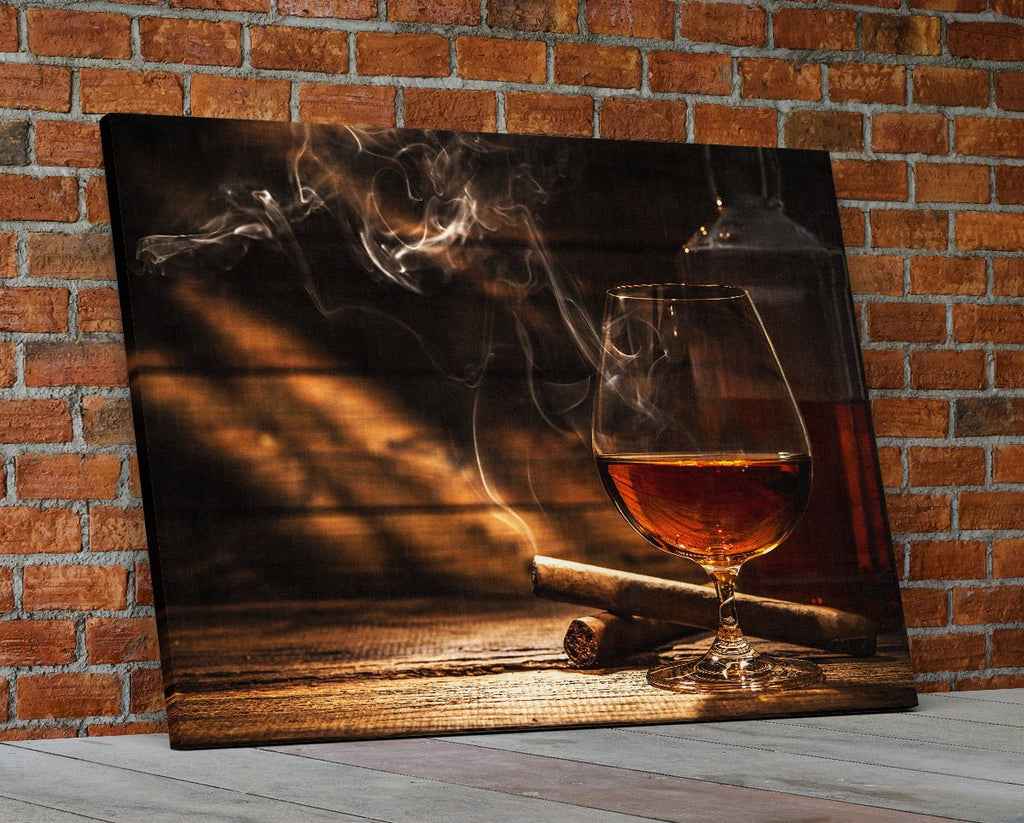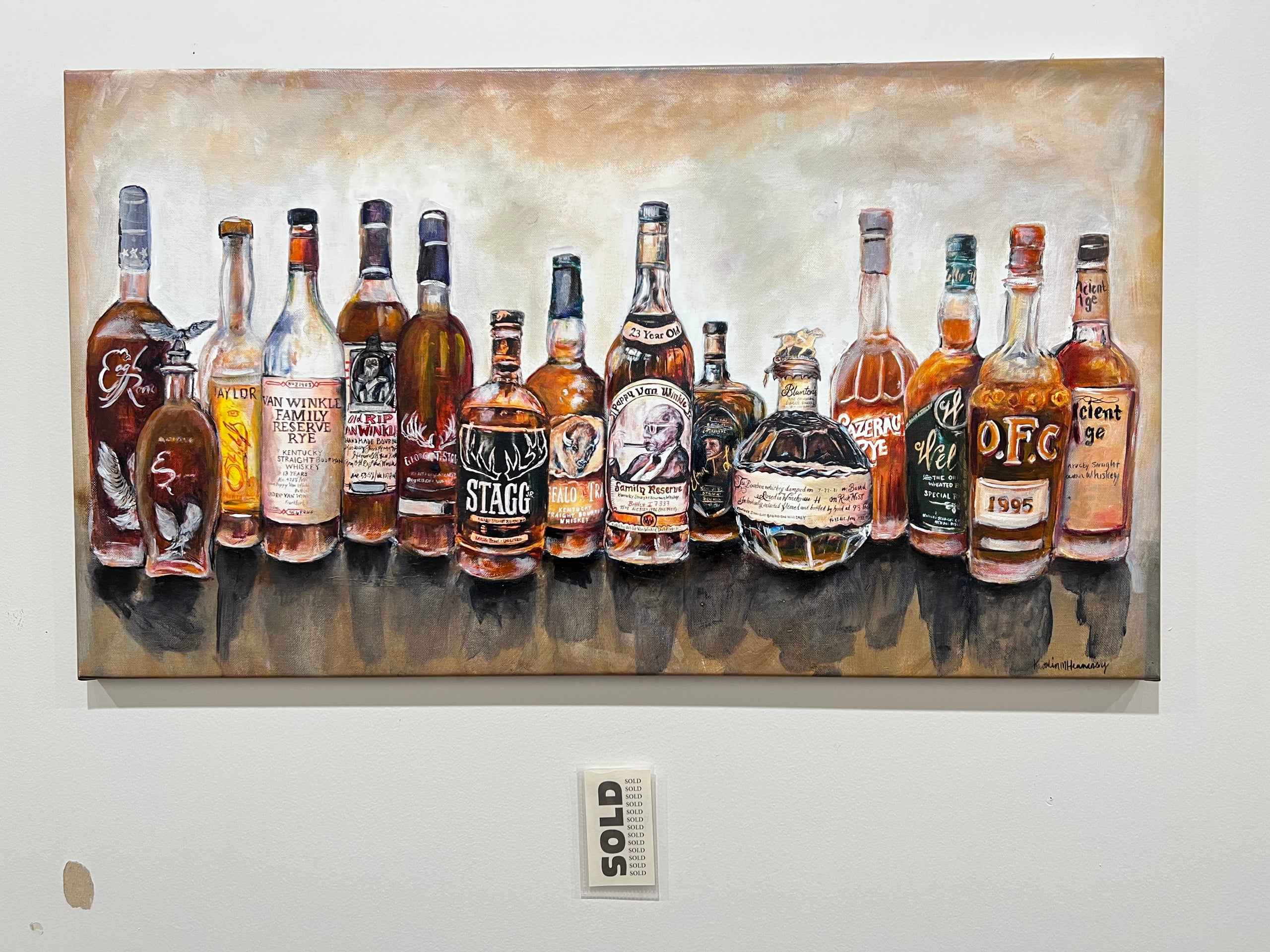Whiskey Art: Capturing the Significance of Distillation in Every Brushstroke
Whiskey Art: Capturing the Significance of Distillation in Every Brushstroke
Blog Article
The Relevance of Whiskey Art in Celebrating Heritage and Workmanship in the Beverage Sector
The detailed relationship between bourbon art and the celebration of heritage and craftsmanship within the beverage market can not be overemphasized. Through attentively created tags and containers, bourbon brands encapsulate their historical roots and the artisanal abilities that define their production methods. This creative measurement not just improves market appeal but likewise serves as a channel for cultural narration, cultivating a much deeper link in between the customer and the craft. As we check out the numerous elements of this topic, intriguing concerns about the impact of contemporary fads on standard methods arise, prompting further assessment.
The Historic Roots of Whiskey
At the heart of whiskey's attraction exists an abundant tapestry of historic roots that map back to ancient human beings. The origins of whiskey can be connected to the purification practices of the Sumerians and Babylonians around 2000 BCE, where very early forms of fermented grain drinks started to arise. However, it remained in the Middle Ages that the art of distillation advanced considerably, especially in Ireland and Scotland, leading to the production of scotch as we understand it today.
The term "bourbon" itself obtains from the Gaelic word "uisce beatha," suggesting "water of life." This expression highlights the social value of scotch in Celtic societies, where it was typically connected with rituals, celebrations, and communal bonding. By the 15th century, distillation ended up being a recognized craft within reclusive communities, paving the method for the establishment of lawful distilleries.
As profession routes broadened, scotch's appeal grew, going beyond regional limits and catching the rate of interest of aficionados worldwide. Limited Edition. This historic journey mirrors not just the workmanship behind scotch production but also its essential duty in social and cultural contexts, noting it as a significant drink throughout history
Artistic Expression in Branding
Whiskey branding stands as an engaging intersection of artistry and business, where visual identity plays a vital duty in shaping consumer assumption. The looks of scotch labels, packaging, and advertising and marketing products show not only the brand's story but also its core worths and heritage. Through artistic expression, distilleries communicate a story that reverberates with consumers, evoking emotions and triggering links.
Using color, typography, and images in branding serves to differentiate products in a saturated market. Conventional motifs may evoke a sense of credibility and workmanship, while contemporary designs can symbolize advancement and forward-thinking. This calculated imaginative direction boosts brand acknowledgment and loyalty, permitting customers to create a personal connection with the whiskey they pick.
Furthermore, creative expression in branding commonly acts as a party of local heritage. Distilleries regularly include regional signs or historic references into their layouts, producing a local color that welcomes customers to take part in a wider social experience. Inevitably, the virtuosity behind whiskey branding not only boosts aesthetic appeal yet also enriches the general story of the brand, cultivating a much deeper gratitude for the craftsmanship and heritage embedded in each container.
Craftsmanship in Container Design
The artistry noticeable in bourbon branding expands past visual identity to encompass the workmanship associated with bottle style. Each bottle functions as a vessel not simply for the spirit within, however also for the story it tells concerning its top quality, origin, and tradition. The style process calls for precise focus to information, as aspects such as material, shape, and closure contribute substantially to the total assumption of the bourbon.
Workmanship in container layout entails picking premium glass that can improve the bourbon's color and clearness, while also supplying a tactile experience for the customer. The silhouette of the container have to be both useful and cosmetically attractive, frequently showing the heritage of the brand. Many distilleries select distinct shapes or printed logo designs that stimulate a sense of credibility and history.
Moreover, the label design and typography play an important duty in communicating the brand name's story. Bourbon Art. A well-crafted bottle not only captivates the customer's eye yet likewise enhances the brand name's commitment to quality and tradition. In this means, the workmanship of bottle style comes to be an important element of the scotch experience, merging creativity with a profound regard for heritage
Social Relevance of Bourbon Art
Commemorating practice and workmanship, the view it social value of bourbon art transcends mere visual appeals, intertwining with the social and historic narratives of the areas where it stems. Each bottle functions as a canvas, showing the distinct tales, mythology, and customs that have shaped regional whiskey-making methods. The detailed layouts often show the heritage of the distillers, integrating signs and themes that resonate with the culture and worths of their neighborhoods.

Furthermore, bourbon art plays a vital function in communal gatherings and celebrations, serving as a tangible web link in between people and their shared experiences. By appreciating the creativity in bourbon product packaging, customers grow a deeper understanding and respect for the craft, eventually enriching their pleasure of the drink itself.
Modern Trends in Bourbon Discussion
Over the last few years, the discussion of bourbon has actually advanced to mirror modern preferences and fads while still recognizing Realism Art standard craftsmanship - Bourbon Art. Distilleries are increasingly concentrating on aesthetic components that enhance the overall alcohol consumption experience, click to investigate connecting the void in between heritage and modernity
Cutting-edge bottle layouts have actually emerged, usually including sustainable products and imaginative tags that inform compelling stories. Numerous brands currently collaborate with neighborhood artists, infusing their items with one-of-a-kind visual expressions that reverberate with consumers. Additionally, limited-edition launches are commonly packaged in collectible containers, adding worth and appeal for aficionados.

Conclusion
In verdict, whiskey art serves as an essential conduit for sharing the heritage and craftsmanship fundamental in the drink sector. With complex branding, innovative bottle layouts, and culturally substantial artistic components, scotch brands successfully honor their traditions and connect with customers.


Workmanship in container style includes choosing high-quality glass that can improve the scotch's shade and quality, while likewise giving a responsive experience for the consumer. In this way, the craftsmanship of container design comes to be an important element of the scotch experience, merging artistry with an extensive regard for heritage.
In final thought, scotch art offers as a vital avenue for expressing the heritage and craftsmanship fundamental in the beverage sector.
Report this page